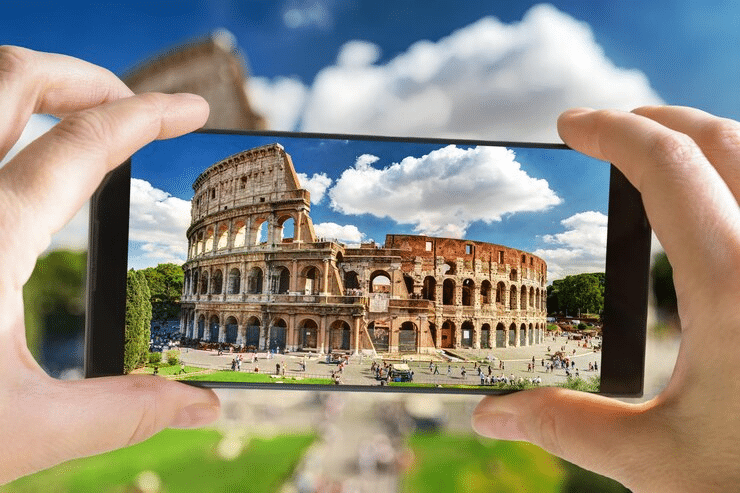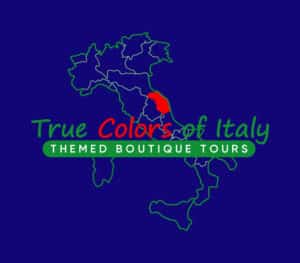Italy is a land where time seems to stand still amidst a brief of history, art, and culture. Imagine walking along cobbled streets that whisper tales of ancient civilizations, standing in awe before masterpieces that have shaped the course of artistic history, and savoring dishes that encapsulate centuries of culinary tradition. This is the essence of an art and culture immersion tour in Italy – a journey transcending sightseeing and transforming into a soul-stirring exploration.
Whether traveling solo or with a group, Colors In Italy art and culture are a few of the beauties you wouldn’t want to miss.
The Allure Of Italian Art And Culture
Italy’s allure in the genre of art and culture is unparalleled. For centuries, it has been a cradle of innovation and creativity, gifting the world with luminaries like Leonardo da Vinci, Michelangelo, and Botticelli. Its influence reverberates across continents, inspiring artists, architects, and thinkers across generations.
- Historical Significance: Italy holds a pivotal place in shaping Western civilization, with its art and culture acting as cornerstones of global history.
- Artistic Legacy: It’s the birthplace of the Renaissance, fostering artistic geniuses like Leonardo da Vinci, Michelangelo, and Raphael, whose works continue to inspire creativity worldwide.
- Architectural Marvels: Italy showcases iconic architectural wonders such as the Colosseum, the Leaning Tower of Pisa, and the grandeur of Vatican City, highlighting centuries of architectural prowess.
- Cultural Diversity: Each region in Italy offers distinct cultural traits, from the culinary delights of Tuscany to the Venetian masks and carnival traditions, enriching the tapestry of Italian culture.
- Rich Heritage: Italy’s heritage encompasses ancient civilizations like the Romans, Etruscans, and Greeks, visible in archaeological sites, artifacts, and the country’s societal ethos.
- Culinary Excellence: Italian cuisine is celebrated globally, emphasizing fresh ingredients, regional specialties, and a dedication to flavors, making dining an integral part of the cultural experience.
- Artisan Traditions: Italy’s commitment to traditional crafts like glass-blowing in Murano, leatherworking in Florence, and ceramics in Sicily showcases a dedication to preserving age-old techniques.
- Human Connection: Italian art and culture foster a deep sense of connection and passion, reflected in the warmth of its people, creating a welcoming environment for visitors to engage and explore.
Planning Your Art And Culture Immersion Tour
Planning your art and culture immersion tour in Italy begins with strategic consideration. It’s crucial to align your journey with your passions and interests. Each city in Italy holds its own marvels waiting to be explored. Researching these destinations helps tailor your itinerary to match your preferences. Whether you opt for a specialized tour or curate a personalized journey, the key lies in aligning the experience with what captivates you most about Italy’s rich artistic and cultural heritage.
Destinations And Highlights
Rome: The Eternal City
Rome, a living testament to the grandeur of the Roman Empire, beckons with its iconic landmarks. The Vatican Museums house a cornucopia of artistic treasures, culminating in the breathtaking Sistine Chapel. The Colosseum and Roman Forum stand as witnesses to an ancient civilization’s glory and legacy.
Florence: Birthplace Of The Renaissance
Florence, where the Renaissance bloomed, boasts a plethora of artistic gems. The Accademia Gallery proudly displays Michelangelo’s David, while the Uffizi Gallery’s halls are adorned with masterpieces by Botticelli, Raphael, and Leonardo da Vinci.
Venice: The City Of Canals And Art
Venice, a marvel floating on water, enchants visitors with its unique charm. The Venice Biennale, a global showcase of contemporary art, showcases cutting-edge creativity. The art of glassmaking in Murano adds a touch of ethereal beauty to the experience.
Naples: Southern Italy’s Artistic Hub
Steeped in history and art, Naples offers a glimpse into ancient civilizations. Explore the haunting ruins of Pompeii and Herculaneum, frozen in time by the eruption of Mount Vesuvius. The National Archaeological Museum unveils artifacts that narrate the city’s rich past.
Cultural Etiquette And Tips
Understanding Italian customs and etiquette can enrich your experience. Fall in love with the warmth of Italian hospitality, learn a few basic phrases in Italian, and respect cultural nuances. Responsible tourism practices ensure the preservation of heritage sites for future generations.
- Greetings and Etiquette: Italians value greetings and often use physical contact like handshakes, hugs, or kisses on the cheek (usually two, starting from the left). It’s common to greet people with “buongiorno” (good morning) in the daytime and “buonasera” (good evening) later in the day.
- Dining Etiquette: Meals are a communal affair in Italy. Wait for everyone to be served before starting to eat, and avoid ordering a cappuccino after a meal—it’s seen as a breakfast drink. Also, asking for parmesan cheese on seafood dishes is generally frowned upon.
- Dress Code: Italians tend to dress elegantly, especially in cities. Avoid overly casual attire, particularly when visiting churches, where modest clothing is appreciated (shoulders and knees covered).
- Language: While many Italians speak English, especially in tourist areas, attempting some basic Italian phrases can be appreciated. “Grazie” (thank you) and “prego” (you’re welcome) go a long way.
- Time and Punctuality: Italians have a more relaxed approach to time. Expect some delays and understand that schedules might not always be strictly followed.
- Respect for Historical Sites and Art: When visiting museums, churches, or historical sites, adhere to the rules—no flash photography where prohibited, maintain a respectful volume, and avoid touching artifacts unless permitted.
- Tipping: Tipping isn’t as common in Italy as it is in some other countries. Service charges might already be included in the bill (coperto), but a small additional tip for exceptional service is appreciated.
- Shopping and Siesta Hours: Many smaller shops and businesses observe a siesta period in the afternoon, closing between around 1 pm to 4 pm. Additionally, asking for prices before touching items in markets or boutiques is customary.
- Public Behavior: Italians are passionate and expressive, but loud behavior in public places like public transportation might draw attention. Try to maintain a moderate volume level in such settings.
Italy has its own set of cultural nuances that travelers should be aware of to navigate the country respectfully and enjoy a smoother experience. Understanding and respecting these cultural nuances can enhance the travel experience in Italy, fostering a deeper connection with locals and ensuring a more enjoyable journey through this culturally rich country.
Culinary Delights: Must-Try Regional Dishes In Italy
Italian cuisine is an integral part of the country’s culture. Indulge in regional dishes, savor authentic flavors, and delve into the art of pairing food with local wines. The culinary journey in Italy is a sensory delight that complements the artistic exploration. Italy’s culinary landscape is a vibrant tapestry of regional specialties, each boasting unique flavors and traditions.
- Pizza Napoletana (Naples, Campania): Originating from Naples, this iconic dish features a thin, chewy crust topped with San Marzano tomatoes, fresh mozzarella cheese, basil, and extra-virgin olive oil. The Neapolitan pizza, cooked quickly in a wood-fired oven, is a must-try.
- Pasta alla Carbonara (Rome, Lazio): A classic Roman pasta dish made with spaghetti, eggs, Pecorino Romano cheese, pancetta or guanciale (cured pork cheek), and black pepper. Its creamy texture and rich flavors make it a beloved dish in the capital.
- Risotto alla Milanese (Milan, Lombardy): Milan’s signature saffron-infused risotto is a creamy rice dish cooked with white wine, onions, broth, and Parmesan cheese. The addition of saffron gives it a vibrant yellow hue and a subtle, distinct flavor.
- Ravioli di Magro (Genoa, Liguria): Ligurian cuisine features delicate ravioli filled with a mixture of ricotta cheese, spinach, herbs, and sometimes a touch of nutmeg. They’re often served with a light tomato sauce or a drizzle of olive oil.
- Focaccia (Genoa, Liguria): Originating from Liguria, focaccia is a flatbread infused with olive oil and topped with salt and sometimes herbs like rosemary. It comes in various forms, from plain to ones with toppings like olives or onions.
- Bistecca alla Fiorentina (Florence, Tuscany): A Tuscan specialty is a thick-cut T-bone steak, usually from Chianina or Maremmana cattle. It’s seasoned with salt, grilled over a wood or charcoal fire, and served rare to medium-rare.
- Sarde in Saor (Venice, Veneto): A traditional Venetian dish featuring marinated sardines cooked with onions, vinegar, pine nuts, raisins, and sometimes a touch of sugar. It’s served cold and makes for a unique flavor combination.
- Polenta (Northern Italy): A staple in Northern Italy, polenta is a porridge-like dish made from ground cornmeal. It can be served creamy, like mashed potatoes, or allowed to set and then sliced and grilled or baked.
- Arancini (Sicily): Sicily’s beloved street food, arancini, is deep-fried rice balls stuffed with ragù (meat sauce), mozzarella, and sometimes peas. They are crispy on the outside and flavorful on the inside.
- Tiramisu (Veneto/Friuli-Venezia Giulia): A heavenly dessert from the Veneto region, tiramisu consists of layers of coffee-soaked ladyfingers, mascarpone cheese, cocoa powder, and sometimes a hint of liqueur.
Immersive Experiences
Beyond admiring art, immerse yourself in Italy’s cultural tapestry. Participate in hands-on workshops where you can paint, sculpt, or even master the art of making pasta. Embrace local festivals, witness traditional crafts firsthand, and engage with artisans who keep age-old traditions alive.
Discover Italy’s Hands-On Workshop Experiences For Visitors
Italy offers a plethora of hands-on workshops that allow visitors to immerse themselves in various traditional crafts and activities. Here are some popular workshops that travelers can participate in:
- Pasta Making: Learn the art of making pasta from scratch with expert pasta makers. Workshops often take place in local homes or cooking schools where participants can create classics like tagliatelle, ravioli, or gnocchi.
- Gelato and Tiramisu Classes: Delve into the secrets of Italy’s beloved desserts. Learn the techniques behind crafting creamy gelato and creating the perfect tiramisu under the guidance of skilled chefs.
- Artisanal Cheese and Wine Tasting: Explore the countryside and visit cheese farms to learn the intricate processes of cheese-making. Pair this with wine-tasting sessions where experts guide participants through the nuances of Italian wines.
- Ceramics and Pottery Workshops: Especially prevalent in regions like Tuscany and Umbria, pottery workshops offer the chance to create your own ceramics, from shaping the clay to decorating and glazing the finished pieces.
- Painting and Art Classes: Italy’s artistic legacy makes it a perfect place for aspiring artists. Take painting classes amidst stunning landscapes or in bustling city studios to hone your skills under the guidance of local artists.
- Olive Oil and Wine Harvesting Experiences: Participate in the olive oil or wine harvesting process, from picking grapes or olives to learning about pressing or fermentation techniques. These experiences often occur during specific seasons.
- Leatherworking: In cities like Florence, delve into the centuries-old craft of leatherworking. Workshops guide participants through the creation of leather goods, from cutting and stitching to finishing.
- Traditional Crafts: Engage in workshops dedicated to traditional crafts like woodworking, mosaic-making, glass-blowing (particularly in Venice and Murano), or even learning the ancient art of bookbinding.
- Perfumery: Explore the world of fragrances by creating your own personalized scent. Perfume-making workshops guide participants through the process of blending various scents to create a unique aroma.
- Truffle Hunting: Venture into the countryside with truffle hunters and their trained dogs to hunt for these prized delicacies. Learn about the truffle-hunting process and indulge in tastings afterward.
These hands-on workshops not only provide an opportunity to learn new skills but also offer a deeper understanding and appreciation of Italy’s rich cultural heritage and craftsmanship.
Conclusion
Italy’s hands-on workshops offer a profound immersion into the heart of its culture. From crafting pasta and pottery to harvesting wine and learning age-old crafts, these experiences aren’t just about acquiring skills; they’re about embracing Italy’s soul. It’s a transformative journey that nourishes the mind, heart, and soul. As you wander through Italy’s storied streets and galleries, you’ll realize you’re not merely a tourist; you become a part of a legacy that has shaped the world.


